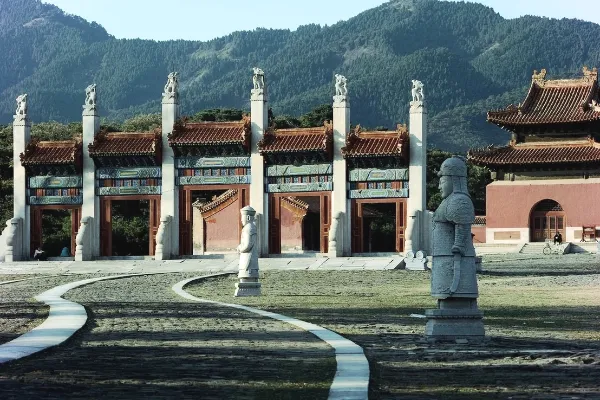
Located in Zunhua, Tangshan City, Hebei Province, the Eastern Qing Tombs represent China's largest and most complete imperial mausoleum complex. Inscribed on the UNESCO World Heritage List in 2000, the 80 sq.km site contains tombs of 5 emperors, 15 empresses, and 136 concubines - 161 individuals in total.
Historical Background
- Construction: Begun in 1661 (18th year of Shunzhi), spanning 247 years.
- Buried Emperors: Shunzhi, Kangxi, Qianlong, Xianfeng, and Tongzhi.
- Architectural Rules: Strictly follows feudal hierarchy principles.
Main Tombs
- Xiaoling: Shunzhi's tomb, the grandest main mausoleum.
- Jingling: Kangxi's tomb, established the "Virtue Monument Pavilion" system.
- Yuling: Qianlong's tomb with exquisite underground palace, called "Underground Buddhist Hall".
- Dingling: Xianfeng's tomb with simpler design.
- Huiling: Tongzhi's tomb, the last imperial tomb built here.
Architectural Features
- Feng Shui: Backed by Changrui Mountain, facing Jinxing Mountain.
- Layout: Each tomb follows "court in front, living quarters behind" axis.
- Artistic Value: Renowned for stone/lattice carvings and painted decorations.
Highlights
- Yuling Underground Palace: Open to public with intricate carvings.
- Xiaoling Sacred Way: 6km main path with well-preserved stone statues.
- Cixi's Tomb: Unique golden dragon paintings and phoenix-above-dragon stone carvings.
- Cultural Relics Museum: Displays excavated artifacts and architectural models.
Visitor Information
- Opening Hours: Peak season (Apr-Oct) 8:30-17:00; Off-season 8:30-16:30.
- Ticket Price: Combo ticket 152 yuan (covers main sites).
- Transportation:
From Beijing: 1.5-hour drive via Jingping Expressway
From Tangshan: Direct tourist shuttle buses
Travel Tips
- Recommended Route: Visitor Center→Xiaoling Sacred Way→Yuling→Cixi's Tomb→Jingling.
- Best Seasons: Spring (April flowers) and autumn (October foliage).
- Notice: Keep quiet in tomb areas; underground palaces are cool (bring jacket).